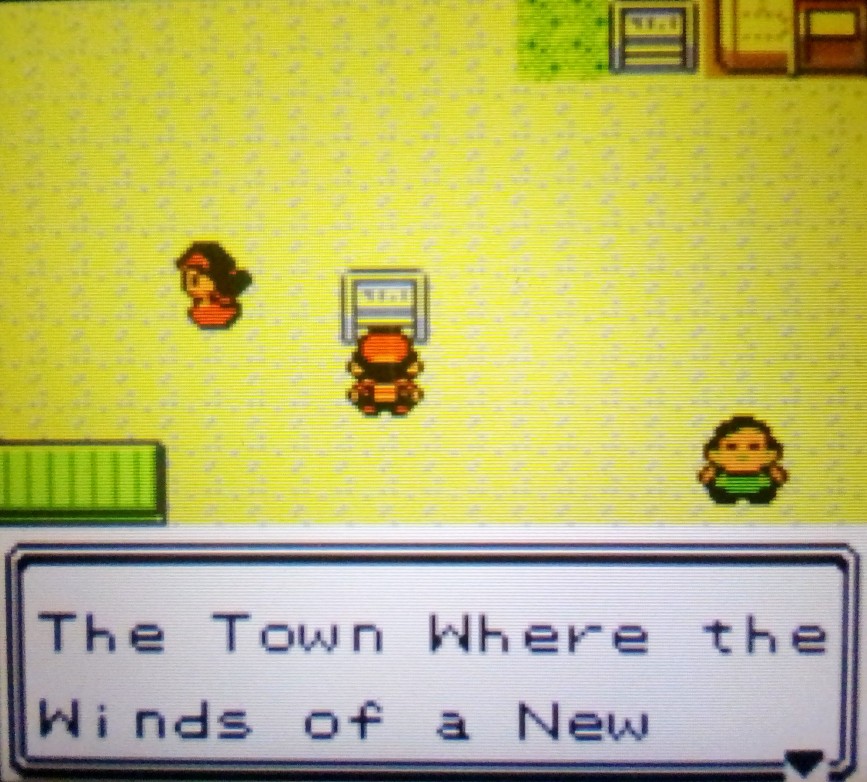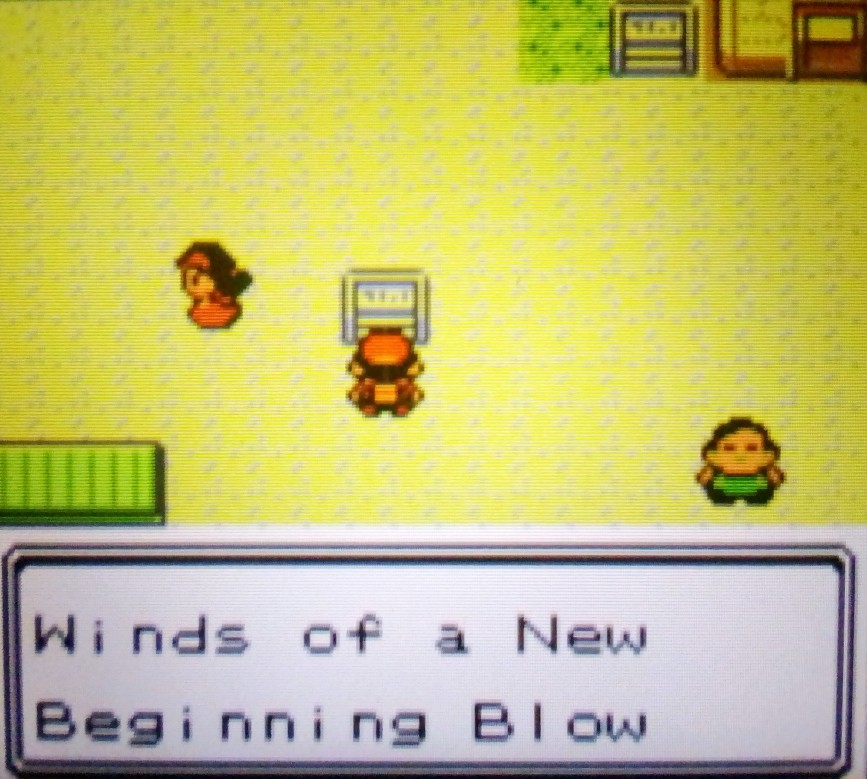On October 15, 2020, twenty years ago to the day, Pokémon Gold and Silver were released in North America. Millions of players started a brand new Pokémon journey in New Bark Town. Like many children at the time, I had played and loved the first Pokémon games, Pokémon Red and Blue, when they were released in the United States on September 28, 1998. Like many, I struggled at the end of that first adventure, ultimately completing it. Two years older and wiser, I procured a copy of Pokémon Gold on its launch day at a local convenience of store of all places. My classmates had long since abandoned Pokémon, having deemed it uncool after playing the original games for countless hours, watching the TV show, and collecting associated paraphernalia. I was less concerned with appearances, and thanks to that, was able to enjoy the crowning game design achievement of the Game Boy Color when it was released.
- Revisiting Pokémon Gold and Silver’s New Bark Town
- Where it All Began: Pallet Town in Pokémon Red and Blue
- The Struggles of Youth in Pokémon Red and Blue
- “The Town Where Winds of a New Beginning Blow”
- The Thematic Elegance of The Winds of a New Beginning
- The Winds of a New Beginning and Revisiting a Classic Adventure
- Appreciating Pokémon Gold and Silver 20 Years Later
- Previewing a New Leaf Journal Battle to Come
- After all these Years…
Revisiting Pokémon Gold and Silver’s New Bark Town
To celebrate the 20th anniversary of the release of Pokémon Gold and Silver in the United States, I will examine the slogan for the first town where the player starts his or her adventure. In so doing, I will place the slogan for New Bark Town in the context of the experience of those of us who played both the original Pokémon games and Gold and Silver around the times they were released.

Where it All Began: Pallet Town in Pokémon Red and Blue
The first Pokémon games had the player start in a quaint town called Pallet Town in English – a name that fit well with those of the other towns and cities in the game, which were all named for colors that may appear on a painter’s pallet. Pallet Town, like every town and city in every mainline Pokémon game, had a sign-board with a town slogan. The English-language slogan was “Shades of your journey await!” – fitting for an adventure into a then-unknown and exciting world for new players.
The original Japanese name for the town was Masara Town – which appears to reference white. Playing on that name, the Japanese slogan for the town was “Masara is the color of pure-white beginnings.” The English slogan captured the same idea as the Japanese slogan – Pallet Town represented a start with many possibilities waiting for the player to color them in with his or her adventure.
The Struggles of Youth in Pokémon Red and Blue
Like countless other children, I completed Pokémon Red, albeit not without some difficulty that stemmed from the limited ability of young children to plan ahead in a game. But after receiving an assist from a loaned Pokémon, I was able to become the Pokémon League Champion, and thereafter, I captured the infamous Mewtwo to proverbially complete my adventure through the first games. Also similarly to children my age who completed the first games in 1998 and 1999, I grew older. I played Pokémon Blue months after completing Red, and I defeated it with none of the difficulty that had accompanied my inaugural adventure. This was owed not only to the fact that I had seen it all before, but also to the fact that I was older and more able to think through the game and plan ahead for situations that had flummoxed me just a year earlier.
Against this backdrop, I was given Pokémon Gold when I was both a bit older and also a bit wiser. No longer prone to stumbling into the Elite Four with an unbalanced team with strange moves and insufficient healing items, I was ready to start a new journey in a new land with new Pokémon. Although Gold and Silver starts the player as a young child in a small town just like Red and Blue did, young veterans of the first game had grown in the real world.
“The Town Where Winds of a New Beginning Blow”
In English, the first town in Pokémon Gold and Silver was called New Bark Town. The name fit with the naming scheme for the second generation Pokémon games, which named towns after trees and plants. Furthermore, it cleverly played with the word “Bark,” not subtly referencing “embark.” The name was also similar to the original Japanese name for the town – Wakaba Town – which evinces a new leaf.
The English slogan for New Bark Town did not tie nearly as directly to the town’s name as did Pallet Town’s, but in its quaint eloquence – it remains the finest of all Pokémon town slogans. The slogan reads as follows, and is an exact translation of the Japanese slogan for the town:
The Town Where the Winds of a New Beginning Blow
Town slogan for New Bark Town in Pokémon Gold, Silver, and Crystal
Below, you will find two pictures of the text of the town slogan for New Bark Town on the in-game sign. I took these pictures from the Nintendo 3DS re-release Pokémon Crystal, the deluxe version of Pokémon Gold and Silver, using my Vankyo MatrixPad S7 tablet.


The Thematic Elegance of The Winds of a New Beginning
Intentional or not, I think the slogan captured something about the growth of many of the people who had played the original games one or two years prior to starting Gold and Silver. In that first adventure, many of us struggled at times through what was the most complicated game we had played to date, discovered many secrets, and ultimately persevered through the end of the game. As Pallet Town’s slogan promised, we colored our journey through capturing the gym badges at Pewter, Cerulean, Vermilion, Celadon, Fuchsia, Saffron, Cinnabar (Island), and Viridian Cities, with a memorable trek from Lavender Town’s ghost-ridden tower along the way, before finally winning the Championship at Indigo Plateau.
Much changes for a child from ages 6 to 8, 7 to 9, 8 to 10, or even 12 to 14. New Bark Town’s slogan not only conveyed that the player was starting a grand new Pokémon adventure in a new all-color region with new Pokémon and a remarkable number of new mechanics, but also that the player, now older and at a different stage of childhood, would experience the adventure in different ways. The winds of new beginnings swept through the real world just as they rustled the trees ensconcing the town atop a hill that was New Bark Town.
The Winds of a New Beginning and Revisiting a Classic Adventure
To this day, the second generation of Pokémon games – Gold, Silver, and Crystal – is the only generation that allows the player to revisit the region of an earlier game. After becoming the league champion in Gold and Silver, the player is able to visit Kanto, where the first Pokémon games took place, and see how the region changed in the year or two since he or she last visited it. In so doing, the player can challenge the same eight gyms that he or she defeated in the original, seeing how the gym leaders grew and changed over the years. Perhaps most notably, the player finds that his or her rival from the original games — who he or she defeated to win the league championship as the final gym leader – had significantly mellowed out from his brash demeanor in the first game.
After collecting those same eight badges from the first game, the player gained entry to Mount Silver, a final dungeon with higher level wild Pokémon than anywhere else in the region. In the similar Unknown Dungeon (or Cerulean Cave) in the original games, the player found Mewtwo at the bottom of the cave. In Gold and Silver, the player found something all-the-more-remarkable at the top of the mountain – the player character from the original games. Upon talking to the hero from Red and Blue, the original protagonist says nothing by “…” (befitting his status as a silent protagonist) before commencing a battle with the highest-leveled opposing team to date. Fittingly, after growing up since beating the first Pokémon games, conquering an entirely new region with new Pokémon, and revisiting all of the haunts from the original games, the player’s journey ends with a battle against the very character he or she spent so much time with in the original adventure. The was no more elegant way to close the book on the second and final Pokémon entry of the 8-bit Game Boy era that began in the small town where the winds of new beginnings blow.
Appreciating Pokémon Gold and Silver 20 Years Later
When I briefly started a new game of Pokémon Crystal for the purpose of taking a few pictures for this article, I was struck by the familiar town tune for New Bark Town. That I still remember the town tune and its theme song well is a testament to how well I remember the second-generation Pokémon games all these years later. I do not remember my first play-through of Pokémon Gold with the specificity that I remember my first play-through of Pokémon Red. With that being said, having played every generation in the series save for one, I do think that Pokémon Gold and Silver were, taking into account when they were made and the technological limitations imposed by the Game Boy Color’s hardware, the finest original entries in the Pokémon series.
I cannot claim, however, that I thought of the broader thematic significance of “The Town Where Winds of a New Beginning Blow” back in 2000, even though I did like the slogan enough to remember it for use in my high school newspaper eight years later. But I can say that even then it had occurred to me how much easier Pokémon Gold was for me than my initial play-thru of Red had been. That, of course, was owed both to my greater familiarity with the game’s mechanics and my being able to process information at a higher level.
Previewing a New Leaf Journal Battle to Come
Because Pokémon Gold, Silver, and Crystal have been re-released for Nintendo 3DS in download form, it is now easier than ever to enjoy the adventures anew. Victor and I have downloaded Crystal, and we were planning to raise teams and have the battle we never could in 2000 if for no other reason that we did not meet until 2006 (despite the fact that our schools in 2000 were across the street from each other). We had done so last year with Pokémon Yellow, the remastered version of Red and Blue, last year (suffice it to say, I did my younger self proud). Our plans for Crystal have been deferred for obvious reasons that can pass without mention here, but at some point in the future, we will finally have our battle and report on it here at The New Leaf Journal. I will say that having played through Yellow last year and begun playing around in Crystal, the classic games hold up startlingly well given their age, technological limitations, and the subsequent additions to later entries in the series.
After all these Years…
All these years later, New Bark Town remains “The Town Where Winds of a New Beginning Blow.”